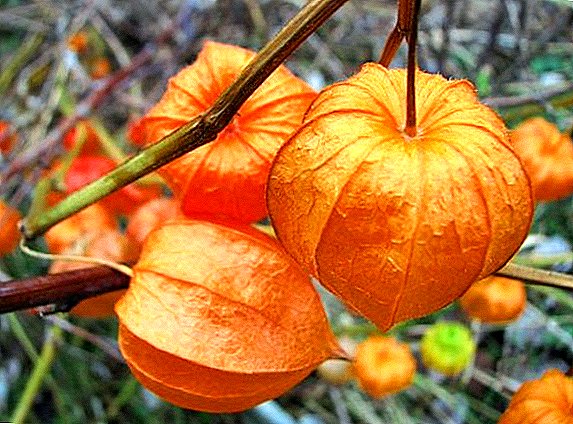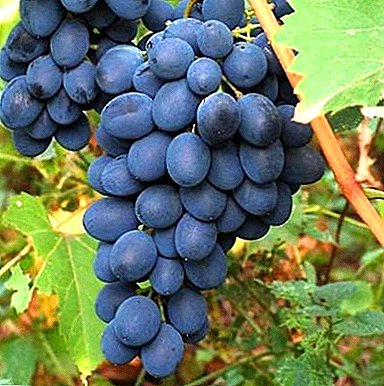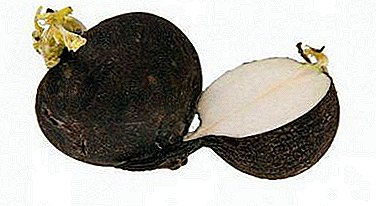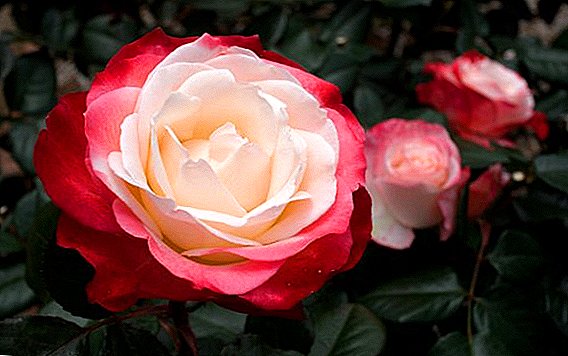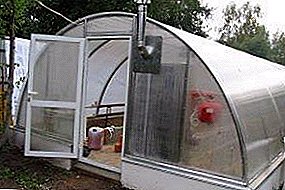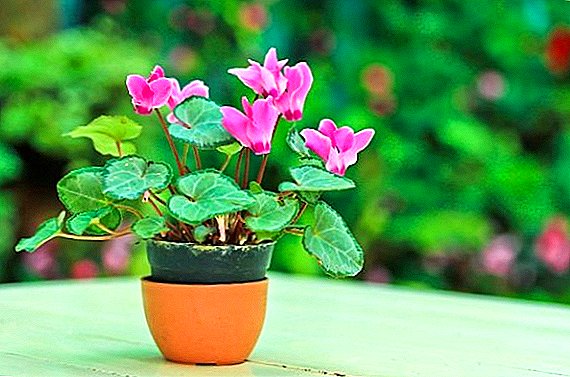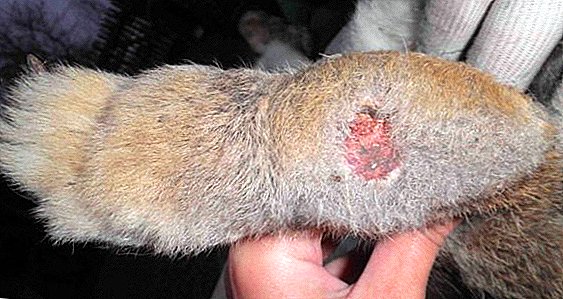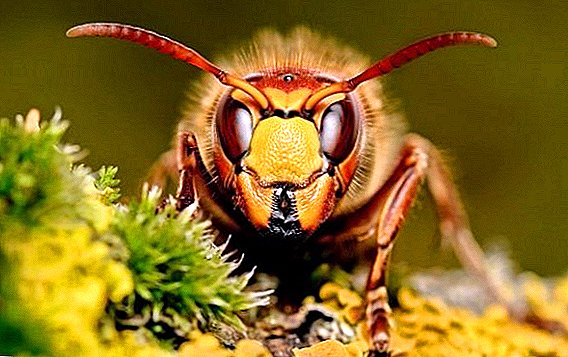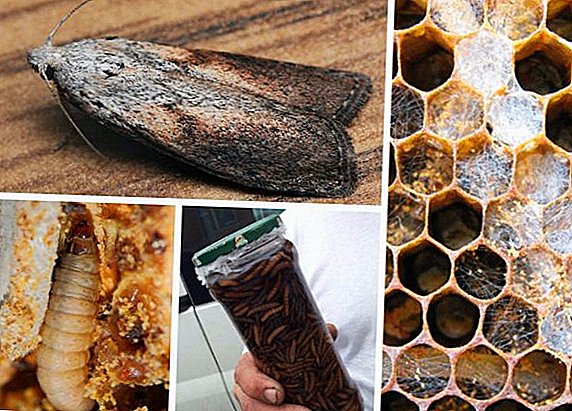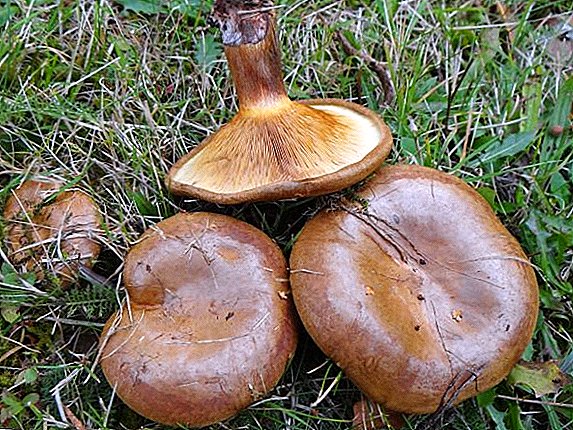 Mushroom svinushka very popular and well known for experienced mushroom pickers. It appears long before other mushrooms and abundantly fructifies until late autumn.
Mushroom svinushka very popular and well known for experienced mushroom pickers. It appears long before other mushrooms and abundantly fructifies until late autumn.
Did you know? According to the external description, svinushka mushrooms resemble a pig's ear. This similarity is observed in obliquely growing caps of the fungus. The reason for this was the leg, which is attached not in the center of the cap of the fungus, but displaced.
Consider the varieties of fungus swine and see if they can be eaten.
Svinushka thin (lat. Paxillus integrautus)
Svinushka thin is a mushroom of the Svushushkovye Boletovye family. Now the fungus is considered poisonous, and until 1981 it was treated as conditionally edible. Thin pig grows in forests of various types and is similar in description to other varieties of this fungus. The cap of the fungus grows in a diameter of 12-15 cm, has an olive-brown color. First, it has a slightly convex shape with a curled edge, then a flat one with a funnel-shaped depression in the middle. The edge is down, maybe wavy. The hat is fleshy, darkens on a break. The surface of its felt-fluffy, and later smooth, in wet weather - sticky. The pulp of the fungus is dense, soft at first, and in the adult fungus loose, yellowish-brown. It does not differ in special smell and taste and can be wormy.
On the underside of the cap there are pseudoplates of yellow-brown color, which easily exfoliate from the cap pulp. Leg mushroom - up to 9 cm tall and 2 cm in diameter. Its surface is smooth, dull, dirty yellow, slightly lighter in color than the cap. Spore powder svinushki thin brown. Many mushroom pickers argue about the poisonous properties of a thin svushka. They claim that they used this mushroom for food always and feel good. Let's see, svinushka thin - poisonous fungus or not. The first fatal eating of a pig in 1944 was noted. German mycologist Julius Schaeffer felt unwell, which developed into vomiting, diarrhea and fever. After 17 days he died. The cause was acute renal failure.
The main thing is that the symptoms of poisoning do not always appear and not immediately. The pig contains toxic substances lectins, which are not destroyed by heat treatment. In the 80s of the twentieth century Swiss doctor Rene Flammmer found that the swine antigen is capable of fixing on the erythrocyte membrane and provoking the immune system to produce antibodies and fight its own red blood cells. As a result, a person develops hemolytic anemia and renal failure. Since it takes some time for the body to produce antibodies, the symptoms of poisoning may not appear immediately. Also, the sensitivity of each organism to mushroom toxins is very different. Therefore, in 1984, by order of the deputy chief sanitary doctor of the USSR, a thin pig was listed in the list of poisonous mushrooms.
Important! There is no antidote for swine poisoning. If, after eating mushrooms, you feel bad, you need to contact a medical institution to monitor blood parameters, kidney function, blood pressure, water and electrolyte balance and correct abnormalities.
Pig alder (lat. Paxillus filamentosus)
Alpine or aspen sowy is a less common species. Received its name from the preferred place of growth under aspen or alder. It has many external similarities with a thin pig, but it differs in a cap that has a scaly-cracked surface with a more yellowish-red shade. Alpine gilts, as well as thin gilts, are poisonous, although some mushroom pickers still consider it conditionally edible.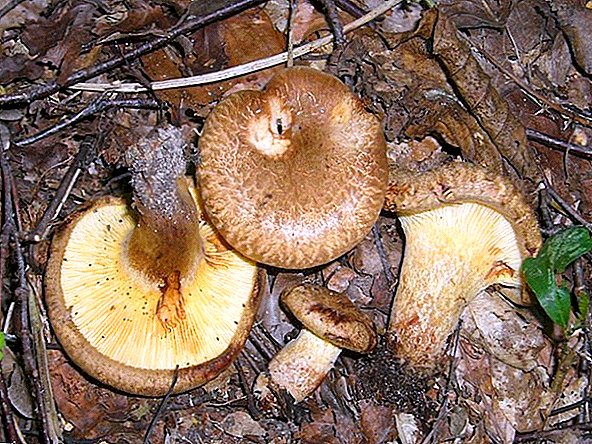
Fat pig (felt) (lat. Tapinella atrotomentosa)
The most common types of pigs include both the thin pig and the thick pig. This is a mushroom of the Tapinella family of the Boletov order. The mushroom has a cap with a diameter of 5-15 cm, first convex, hemispherical in shape, and later lingual with a funnel-shaped recess in the center. The surface of the cap is velvety or smooth with a rusty brown color. The edges are tucked. From the bottom side it has a frequent lamellar cream-colored layer in young mushrooms and brown in mature ones. The leg is about 7 cm tall and in diameter up to 3.5 cm of cylindrical shape, it can be mounted centrally or with lateral displacement.
Its surface is velvety, dark brown color. It is often entirely immersed in the substrate. The pulp of the fungus is whitish-yellow in color with no special smell with a bitter taste. It has the ability to swell in the presence of moisture and darkens at the kink. Spore powder of mushrooms yellow-brown color. Ammonia dyes thick pig's flesh in a bright lilac color, and potassium hydroxide (KOH) - in green and black. Svushka fat refers to conditionally edible mushrooms. Abroad is considered inedible or with unexplored toxic properties. The pulp of these fungi contains atromentin (brown pigment), which acts as an antibiotic and has an antitumor effect, telephoreic acid (blue pigment), used to dye the wool blue.
Tapinella panusoidal, or ear-shaped piglet (Latin Tapinella panuoides)
The ear pig is an agaric. The body of the fungus can have lateral attachment in the form of flat-shaped caps with a diameter of up to 16 cm, which are arranged singly or fused on a thickened mycelium in the form of a short leg. The surface of the cap is felt, and later smooth, from yellowish-cream to brownish-purple. The edge of the fungus is thin, tucked, can be wavy. From below the cap has narrow plates from yellowish cream to orange.
The base of the fungus is dense, velvety, brown. The flesh is fleshy, light brown in color, it becomes spongy when dry. Mushroom grows from late summer to late autumn singly or in groups on stumps or coniferous wood. The fungus can settle on the surface of old wooden buildings, causing their destruction. The pig of the ear is attributed to poorly poisonous mushrooms due to the presence of lectins. These toxins cause sticking of red blood cells.
Did you know? The name of the mushroom tapinella panusovnaya translated as carpet.
Paxillus ammoniavirescens pigs
This mushroom is found both in urban parks and in the forests of Italy, Germany, Spain, Sweden, Portugal, France, England and in the countries of northern Africa. He refers to the poisonous. The cap of the fungus is fleshy, dense, yellow-brown in color, up to 12 cm in diameter. The body of the fungus itself grows low, up to 10 cm in height. Most massively grows in the fall. The spores of the fungus are large, brown in color.
Paxillus obscurisporus
The mushrooms of the pig Paxillus obscurisporus are classified as deadly poisonous and are similar in description to chaboris (Clitocybe genus). Distinctive features are brown, rather than white plates under the cap and brown, not white spores, like those of govorushek. The fungus most often grows under lindens or other broadleaf trees or on open pastures. It has caps much larger than other pigs. Pulp without distinctive smell, taste - sour. The hat is golden brown, with a diameter of 4-13 cm, with a raised wavy edge. The leg of the fungus is up to 8 cm tall, slightly expands from the ground towards the cap and is colored gray-yellow. The period of fructification - July - September.
Paxillus rubicundulus
A characteristic feature of these pigs is a funnel-shaped cap with a diameter of up to 15 cm of yellowish-brown color with a reddish tinge. The flesh has a whitish-yellow color and changes it when broken to red-brown. The surface of the cap is smooth and velvety. The leg is cylindrical, 8 cm high, first yellow, and then acquires a reddish-brown color. This type of fungus is widely spread in Europe. This swine mushroom prefers to grow on the banks of rivers, in light forests with moist soil and forms a symbiosis with alder.
Did you know? Mushrooms are popularly called forest meat. They contain a lot of protein, amino acids necessary for normal brain function, B vitamins to protect the nervous system, trace elements that improve blood formation, beta-glucans that enhance immunity, and many other beneficial substances.
Paxillus vernalis mushroom
The fungus is found in the mountain forests of North America, Estonia, Great Britain, Denmark. Forms a symbiosis with aspen and birch. The period of fruiting is August - October. The cap is convex, may have different shades of yellow-brown color. Its surface may be smooth or slightly rough. Under the cap are placed yellow plates. The pulp of the fungus is fleshy, dense, with no pronounced smell. Her yellow color on the break changes to red-brown. The leg is up to 9 cm high, 2-2.5 cm in diameter, the color coincides with the color of the cap.
Important! Svinushka thin synthesizes muscarin. This is a dangerous poison, which in toxicity is equal to the poison of the red mushroom. It is not destroyed while boiling mushrooms.
Eating swine can cause a hurricane allergic reaction with a fatal outcome. Therefore, before eating one type of swine, you must make a choice for yourself - to risk your life or not. What is more expensive for you - the taste of swine or life, decide for yourself.


